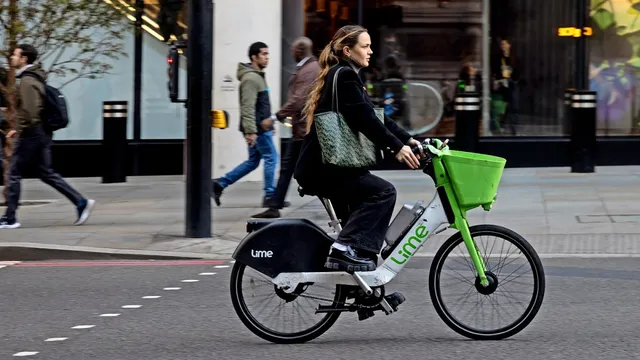
Bolt vows to challenge Lime's e-bike monopoly in London
2025-06-17 23:01- Bolt enters the London e-bike market, challenging incumbent Lime.
- The new motorbike service features an innovative charging model for compliance.
- This competition could ultimately enhance consumer choices and pricing.
Express your sentiment!
Insights
In London, a significant shift is occurring in the electric bike-sharing industry as Bolt enters the market, looking to take on the established e-bike service provider, Lime. This development signifies a growing competition in the realm of sustainable transportation options, particularly in urban areas where demand for eco-friendly mobility solutions is surging. Due to the rapid rise in e-bike usage, the introduction of another player like Bolt is expected to invigorate the market, potentially benefiting consumers with more choices and competitive pricing. Bolt's entry into London highlights its innovative approach, particularly its unique charging model designed to prevent riders from violating traffic regulations, such as jumping traffic lights. By addressing rider safety and promoting responsible usage, Bolt is not only prioritizing customer satisfaction but also aiming to foster a safer environment for all road users. This strategy might set a new standard for e-bike services that prioritize compliance with local traffic codes. As Bolt launches its fleet, Lime, which has maintained a stronghold in the market, will have to adapt to this new competitive landscape. The rivalry between these two companies could lead to more aggressive marketing strategies, improved service delivery, and potentially cause a decrease in prices for consumers. Additionally, it may encourage other businesses to enter the e-bike market, further expanding the range of options available to riders. In summary, Bolt's entrance represents a crucial moment for sustainable transportation in London. The increasing competition promises to enhance user experience, but it will also challenge existing players like Lime to evolve their offerings to retain their customer base. The development reflects broader trends towards greener modes of transport and changing consumer preferences within urban mobility frameworks.
Contexts
As e-bikes grow increasingly popular in urban areas like London, understanding and regulating their use becomes essential for ensuring the safety of all road users. E-bikes, known for their electric assistance, facilitate transportation and contribute to lower carbon emissions. However, with the rise in their usage, concerns about safety, infrastructure, and compliance with traffic laws have become paramount. The current regulations surrounding e-bikes in London emphasize that these vehicles must comply with specific legal requirements – notably, they must not exceed a maximum unassisted speed of 15.5 mph and should have a power output not exceeding 250 watts. Additionally, all riders must be at least 14 years old, and e-bikes are classified under the same laws governing bicycles, which means that they can be used on the road and in bike lanes, but not on the pavement unless it is shared with pedestrians. To enhance safety measures, London has implemented various initiatives aimed at minimizing accidents and ensuring the responsible usage of e-bikes. This includes designated cycling lanes, which help to separate cyclists from motor traffic, thus reducing collisions. The London Cycling Campaign has actively advocated for improved cycling infrastructure to accommodate the increasing number of e-bike users. Furthermore, educational campaigns aimed at both cyclists and motor vehicle drivers focus on raising awareness about sharing the road responsibly. Riders are encouraged to use helmets, and some localities and organizations promote training programs that equip cyclists with the necessary skills to navigate busy traffic conditions safely. Aside from infrastructure improvements and educational efforts, enforcement of existing traffic laws remains crucial. Local authorities in London have introduced measures to tackle irresponsible riding behaviors, including speeding and riding in pedestrian zones. Surveillance cameras and public awareness initiatives help to enforce these regulations, and the implementation of penalties for violations aims to discourage dangerous riding practices. Moreover, areas with high pedestrian traffic often see increased enforcement of these regulations, which underscores the city's commitment to fostering a safer environment for all users. As e-bike regulations continue to evolve, stakeholders must remain engaged in dialogue to address emerging concerns and adapt to changing usage patterns. The City of London already collaborates with technology companies to explore innovative solutions for monitoring e-bike use and analyzing accident data to refine safety measures. Future regulations may potentially focus on licensing for e-bike riders, adherence to speed limits, and insurance requirements, reflecting the growing recognition of e-bikes as a vital component of urban mobility. As these developments unfold, it is essential for all parties involved – from policymakers to riders – to advocate for responsible usage, safety, and sustainable urban transport solutions.